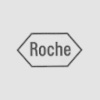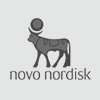Chicken IgY Antibodies
Laying hens are highly cost-effective as producers of antibodies compared with the animals traditionally used for such production. Chicken antibodies have biochemical advantages over mammalian antibodies due to the phylogenetic differences between avian and mammalian species, resulting in increased sensitivity as well as decreased background in immunological assays. In contrast to mammalian antibodies, chicken antibodies do not activate the human complement system nor will they react with rheumatoid factors, human anti-mouse IgG antibodies, or bacterial and human Fc receptors. Chicken antibodies offer many advantages over mammalian antibodies and are, even now, beginning to replace conventional sources of custom produced antibodies.
Research and diagnostic antibodies
Antibodies available to research laboratories generally belong to one of three main categories: mammalian monoclonal antibodies, mammalian polyclonal antibodies, and avian polyclonal antibodies. The species chosen for antibody production have usually been mammals, most frequently rabbits. Avian antibodies have been recognized for several decades and offer many advantages to mammalian antibodies. The only avian species from which antibodies are highly defined and easily accessible is the chicken. The major serum antibody in chicken is IgY, but antibody is also actively transported to the egg in a manner similar to the placental transfer of IgG in mammals. The protection against pathogens that the irnmuno-incompetent newly hatched chick has is through transmission of antibodies from the mother via the egg. In the egg, chicken IgY is found mainly in the egg yolk, whereas the concentration in egg white is very low. Chicken IgA and IgM is found in the egg white in very low amounts
Chickens and rabbits
A laying hen produces approximately five to six eggs per week with a yolk volume of approximately 15 ml per egg, the antibody concentration of which is comparable to that of serum. Therefore, in one week a hen produces egg antibodies equivalent to 75 to 90 ml of serum or 150 to 180 ml of whole blood. This could be compared to an immunized rabbit, which yields approximately 20 ml whole blood per week. Only large mammals such as cows or horses can produce more antibodies than a laying hen. The blood collection procedure is time consuming and stressful for the animal. Furthermore, the cost of feeding and handling is considerably lower for a hen than for a rabbit. Crude egg yolk may be used as an antibody source, but the lipids in the yolk may interfere with the antibody activity. Therefore, avian antibodies are usually purified from the yolk prior to use.
Phylogenetic Differences
In general terms, the antibody response will improve as the phylogenetic distance between the immunized animal and the species providing the antigen increases. Because of the evolutionary distance between birds and mammals a chicken is often a better choice for antibody production than a mammal when the antigen is of human or other mammalian origin. This is of particular relevance for highly conserved proteins, such as hormones, which demonstrate few differences in amino acids between closely related species. For instance, there is only one amino acid that differs between human and porcine insulin, but seven amino acids differ between human and chicken insulin. Chickens will recognize more sites on the insulin molecule as foreign, and more antibodies will bind to the molecule, which will result in an amplification of the signal in an irnmunoassay. If a second antibody of mammalian origin is used, the phylogenetic difference will result in further amplification, as more secondary antibody is bound to chicken IgG than to rabbit IgG. Antibody diversity is achieved differently in chickens than in mammals. The chicken light chain locus consists of a single J-C unit to which the same V gene becomes rearranged in nearly all bursal cells. The chicken light chain repertoire thus appears to be of an extremely somatic type. This, combined with the observation that the chicken will frequently recognize more sites on a mammalian protein as foreign, will give access to a different antibody repertoire. It may therefore be possible to produce antibodies in chicken that are difficult or impossible to produce in a mammal.
Avoiding Interferences
A frequently used approach for the detection of antigens is to create a so-called sandwich assay (immobilized capture antibody, antigen, and labeled detection antibody). The antibodies in such assays are usually derived from mammals, and the samples to be tested are often serum or plasma. If anti-mammalian IgG antibodies are present in the samples they may simulate the behavior of the antigen by linking the detection antibody to the capture antibody, thus causing false positive reactions. Such false positive reactions occur in sandwich assays whether or not the assay utilizes mammalian polyclonal or monoclonal antibodies. The most well known of these anti-mammalian lgG antibodies is rheumatoid factor, which is an IgM antibody reacting with the Fc fragment of mammalian IgG.The disease usually associated with rheumatoid factor is rheumatoid arthritis, but it can also be found in serum from patients with other diseases and also in sera from healthy individuals. As the sensitivity of the assay increases, so will the interference by anti-IgG antibodies. Another cause for the presence of anti IgG antibodies is the in vivo use of heterophilic antibodies. Mammalian antibodies have been used in vivo for the treatment of patients for more than 100 years, but during the last decade there has been an increasing use of such antibodies. Mouse monoclonal antibodies are now widely used in vivo for diagnosis and treatment of patients and will probably be used even more in the future.When such antibodies are given to the patient, the patient normally responds by producing human anti-mouse Ig antibodies (HAMA). The HAMA will react with mouse antibodies but also with structurally related proteins such as IgG of other mammals. Thus, the presence of HAMA might give false positive reactions with all types of sandwich assays based on mammalian antibodies. Chicken IgG have no immunological cross reactivity with mammalian IgG and can thus be used to avoid interference due to rheumatoid factor or HAMA. The crossreactivity between different mammalian lgG may also cause problems in histochemical staining. If a mammalian lgG is used as primary antibody in histochemistry, the secondary anti-IgG antibody may also react with IgG in the mammalian tissue section, which will result in an increased background staining. This can be avoided if chicken IgG is used as the primary antibody due to the lack of cross-reactivity between chicken and mammalian IgG.
Complement
Many immunological assays utilize mammalian capture antibodies bound to a solid phase. When a serum sample is added to the immobilized antibodies, the complement system in the samples is activated and the complement components are bound to the antibodies This binding may block the antigen binding sites, and it has been shown that complement activation may interfere with antigen binding to the capture antibody and significantly reduce the number of positively reacting samples The complement system is inactivated during storage. The standards used in immunological assays have usually been stored for some time and will thus have an inactive complement system, whereas the complement activity in the patient samples vary. This will cause an analytical error. Chicken antibodies do not activate the human complement system and can thus be used to avoid this interference problem.
Mammalian Fc-Receptor
Receptors for the Fc domain of IgG provide an important link between specific humoral responses and the cellular branch of the immune system. The binding of IgG to a Fc-receptor may trigger many biological responses (phagocytosis, endocytosis, antibody-dependent cellular cytotoxicity, release of inflammatory mediators, and enhancement of antigen presentation). Flow cytometry is widely used in clinical laboratories for the detection of cell surface proteins. The system utilizes labeled antibodies for the detection of specific cell markers. When the antibody reacts with the antigen, an immune complex is formed. Immune complexes containing mammalian antibodies may interact with Fc or complement receptors on the cell, which can cause cell activation and changes in the expression of surface proteins. It has been shown that immune complexes containing mammalian antibodies, but not chicken antibodies, will cause erroneous results when measuring platelet activation.
Bacterial Fc-Receptor
Antibodies may also be used for the detection of bacterial infections, but some bacteria have IgG-binding membrane proteins. The most well known of these proteins are Staphylococcus aureus protein A and streptococcal protein C. These protein will bind the Fc portion of IgG from many mammalian species, but they will not bind chicken IgY. A bacterial specimen usually contains numerous bacteria. If staphylococci or streptococci are present in the sample, these bacteria may bind the Fc portion of the antibody and cause a false positive reaction.
Stability
Experience with egg yolk antibodies is that they are stable over time, which contradicts some rumors that chicken antibodies are labile. IgY antibodies have been stored for over 10 years at 4° C without any significant loss in antibody activity Chicken antibodies have also retained their activity after 6 months at room temperature or 1 month at 37° C. Chicken antibodies are also useful in immunoprecipitation assays in agar. Chicken antibodies offer many advantages to mammalian antibodies, and a change from mammalian to chicken antibodies may in many cases improve an immunological assay.
from Larsson et al, Poultry Science (1993) 72:1807 with changes
















